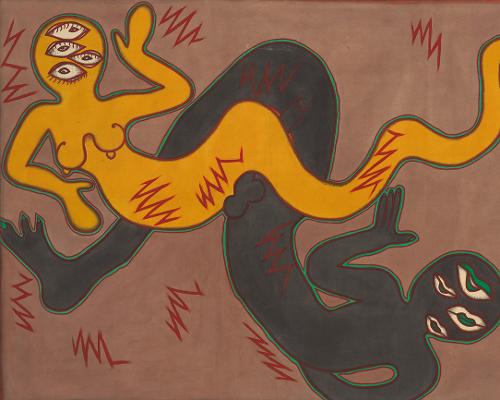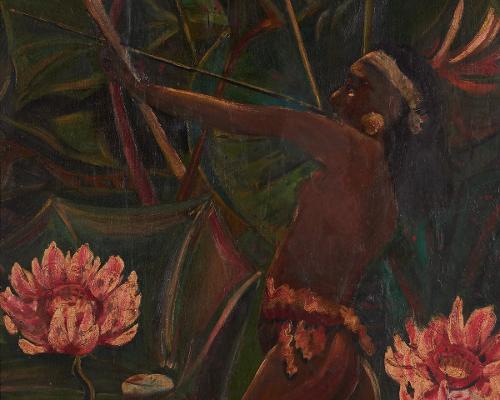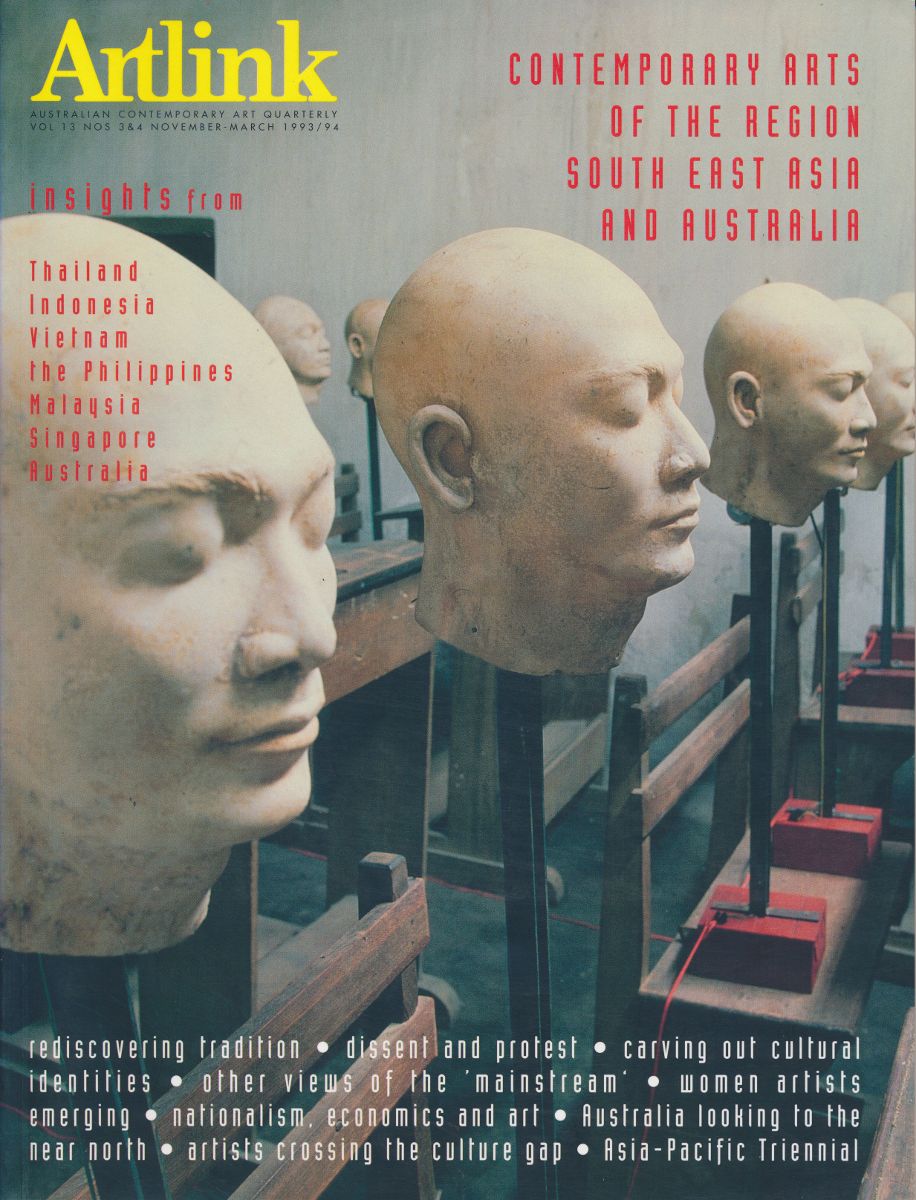
As part of Artlink’s Archive Project, I was invited to respond to previous issues of Artlink over the decades: Contemporary Arts of the Region: South East Asia and Australia (1993-94) and This Asian Century (2013), which featured discussions on art and artists in Indonesia. In particular, two essays written by Pak Jim Supangkat provided inspiration: The Framing of Indonesian Contemporary Art (1993) and Growing Pains: Contemporary Art in Indonesia 1990-2010 (2013).
Jim Supangkat is an Indonesian sculptor, curator and critic born in Makassar in 1948, who has been widely influential in the development of modern and contemporary art discourse in Indonesia and in the international arena. His important text, A Brief History of Indonesian Modern Art was first published in 1993 and recently reprinted in the anthology, Living Art: Indonesian artists engage politics, society and history (2023).
By contrast, I was trained in urbanism—the study of how human beings interact with urban environments—at the same alma mater as Pak Jim, Institut Teknologi Bandung, in West Java. In 2020, due to my interest in ‘creative cities’—how arts and culture could play a part in the process of urban planning and design—I moved to Melbourne to study a Master of Cultural and Creative Industries at Monash University, which opened a postgraduate campus in Jakarta in late 2021. This cross-disciplinary background has taught me to look at art as a part of a much greater whole; it does not exist in a vacuum but intertwines with other nodes within a system. My current position at the Australian Network for Art and Technology (ANAT) in Adelaide adds another layer to my understanding of art, as does frequent travel between ‘home’ in Indonesia and ‘home’ in Australia. As someone born in 1996, I am part of the last cohort of millennials, hovering on the edge of Generation Z, existing not just in a liminal space between two cultures, but in a liminal time between two generations.
Hence, my reading of the archive will be coloured by these circumstances. As someone much younger and with a very different technological worldview than Pak Jim, I will not be ‘critiquing’ his ideas so much as summarising and ‘learning’ from them. Bringing our intergenerational perspectives together creates an opportunity to explore Pak Jim’s ideas against the currents of today’s critical language and concerns. Can the art historical dialogues of Indonesia’s recent past inform other disciplines, such as the broadly pitched creative industries, in which I am situated?
Naming Indonesian art, from ‘modern’ to ‘contemporary’.
In 1993, Pak Jim observed that research on Indonesian modern art mostly relied on social sciences such as anthropology, because there was no local tradition of a conceptual framework for Indonesian art itself. Its art critics instead used terms from Western art movements such as surrealism, naturalism, and expressionism to categorise Indonesian modern art. This terminology caused puzzlement, notably in European art circles. When the Exhibition of Modern Indonesian Art in the Netherlands was being prepared in 1993, Pak Jim saw how Dutch curators expressed confusion: how can there be ‘advocates of surrealism, an art movement born in Europe in 1917’ on the cusp of the 21st century in Indonesia?[1]
As Pak Jim also noted, the usage of a global framework of modern art was ‘increasingly inappropriate’ considering some artists are reluctant for their work to be categorised using a European lens. For Pak Jim, this incongruence suggested that an examination of Indonesian art could not be done solely within an aesthetic framework; it requires a tailored approach that considers ‘the pattern of its development’. Although Pak Jim recognised that Indonesian modern art is influenced by world modern art, he realised that differences in geographic and historical backgrounds had led Indonesian modern art to evolve independently of the dominant narratives of Western art, or what he called ‘the mainstream of world art’.[2]
Pak Jim used the ideas of Indonesian painter S. Sudjojono (1913–1986) as a lens to observe how the mainstream understanding of modernism had influenced Indonesian modern art. Sudjojono was a key figure in PERSAGI (Persatuan Ahli Gambar Indonesia/Indonesian Painters Union), whose founding in 1938 marks the beginning of an organised modern art movement in Indonesia. In 1946, in the lead-up to Indonesia’s independence from colonial Dutch rule in 1947–49, he famously said, ‘Art must be as independent as possible from all moral ties and traditions in order to grow fruitfully, freshly and freely.’[3]
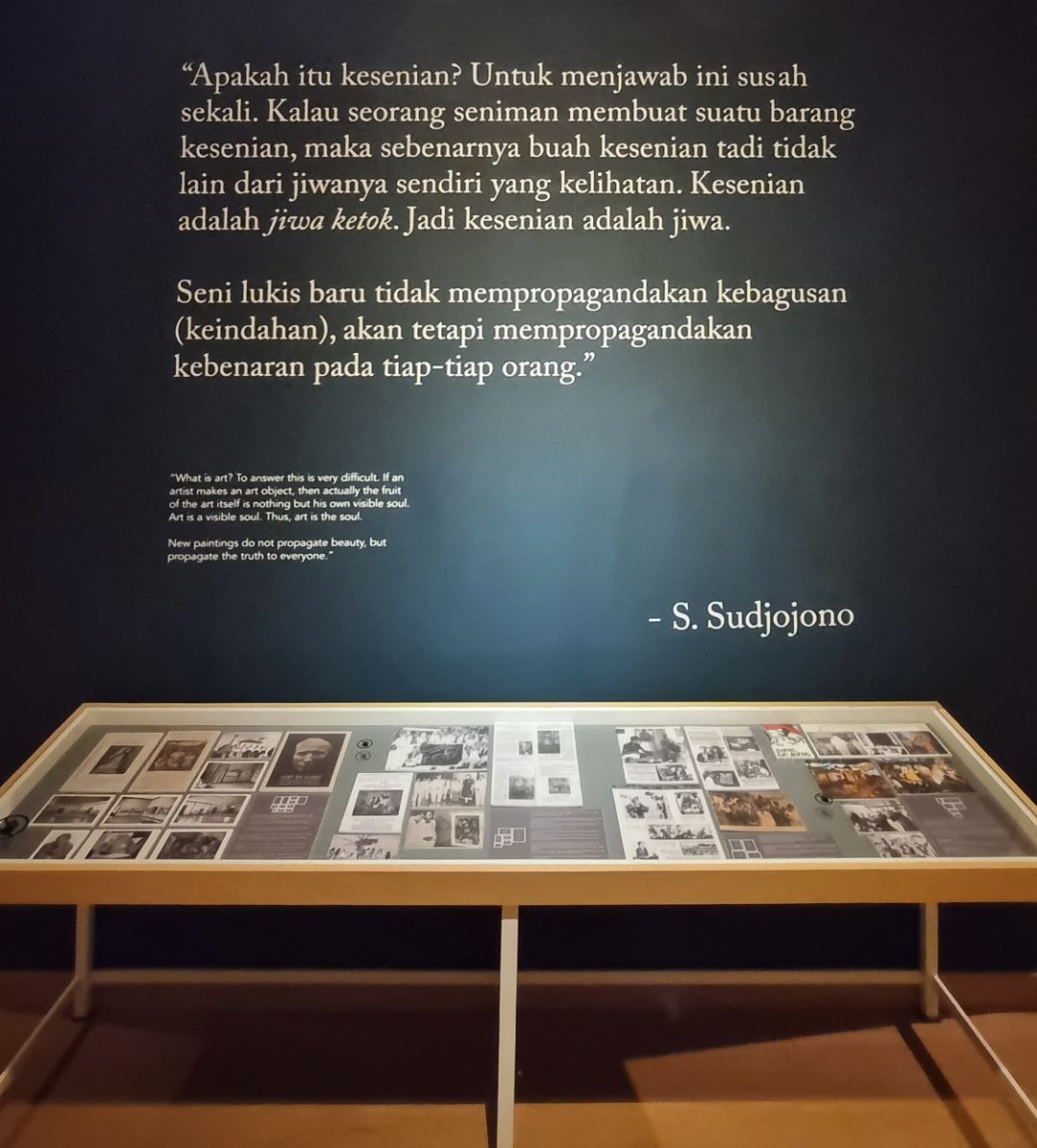
Staying true to these words, Sudjojono’s art, much like other artists in the early years of Indonesian modern art, was autonomous—not rooted in any tradition except their own understanding of modernism. And as Pak Jim noted in 1993, there was no avant-garde instigating modernism’s trajectory. That is, Sudjojono’s rebellion always carried a social undertone. PERSAGI consisted mainly of artists with no formal training in modern art, thus the existing art circles did not recognise them as painters. Despite this, or perhaps because of this, Sudjojono instead lauded their presence as the ‘New Artists,’ a nomenclature that differentiates this group from the more established Dutch and pro-Dutch Indonesian painters of the time, who favoured landscape or Mooi Indie (beautiful Indies) imagery. Sudjojono’s efforts to defend these disaffected painters were supported by the rising independence movement, and in this unrest, the developmental directions of Indonesian modern art would gain force and form.
In the postmodern period in which Pak Jim was writing of this recent history, faith in universalism (and imperialism) had been shaken, while pluralism with its emphasis on relativity and rejection of absolute standards, had become more prevalent. I find this emphasis on pluralism interesting, considering Indonesia’s national motto, ‘Unity in Diversity’ (Bhinneka Tunggal Ika), highlights that plurality is ingrained in Indonesian culture. In 1993, Pak Jim cited British theorist Andrew Benjamin on the risks of pluralism inscribed within universalism, implying that modern art produced in a particular nation carries the specific characteristics of that nation—its ‘national identity.’ In Benjamin’s opinion, it is through the interplay between universalism and national identity that the tradition of modernism can reach a new articulation.[4]
This ‘articulation’ was perceptible in the principles set forth by GSRB (Gerakan Seni Rupa Baru/New Art Movement), of which Pak Jim was a founding member. The group first exhibited in 1975 at the Taman Ismail Marzuki Art Centre (established in 1968) and continued its activities until its disbandment in 1989. According to Pak Jim, GSRB was a sign of the emergence of contemporary art in the country. It might also explain his nostalgia for the early years of GSRB’s activity and the Taman Ismail Marzuki, as history has favoured the spirit of artistic experimentation of GSRB’s founding artists.
Growing pains? What happened between 1990-2010?
Two decades later, in 2013 and after the postcolonial shifts of the 1990s, Pak Jim wrote that universalism was being reshaped gradually by the diversity and multiplicity intrinsic to globalism; there was also a move to more local and regional interests.[5] In this period, Indonesian artists entered the global art scene through exhibitions in Japan and Australia, such as New Art from Southeast Asia, a 1992 exhibition by the Japan Foundation that included three Indonesians. Another was the first Asia Pacific Triennial of Contemporary Art, in 1993 in Brisbane with nine Indonesian participants, a figure which would grow for a decade before changes in Australia’s politics came to impact such cultural diplomacy.[6]
The positive impact of these exhibitions influenced the Jakarta Arts Council to feature contemporary art at the pivotal Jakarta Biennale IX, (1993–1994) in which Pak Jim was the lead curator. Held at the Taman Ismail Marzuki Art Centre, it showcased forty Indonesian artists, but erupted in controversy due to the challenging nature of the works.[7]
The criticism began with the participants, before art critics and the public followed. Mass media eventually piled on, without any coherent comprehension, criticising postmodernism and contemporary art in the biennale as sources of anarchy endorsing negative Western influences. For example, the Indonesian newspaper Republika wrote that ‘Through postmodernism, the needles of anarchism and Marxism infiltrate…’[8] This controversy demonstrated the emergence of active engagement with contemporary art in Indonesia, however, Pak Jim thought the ill-informed criticism transformed Biennale IX into a counterproductive exercise, ultimately obstructing the development of contemporary art in Indonesia throughout the 1990s.[9] By the end of the decade, and the massive changes associated with the end of Suharto’s New Order regime in 1998, contemporary art had a renewed agenda.
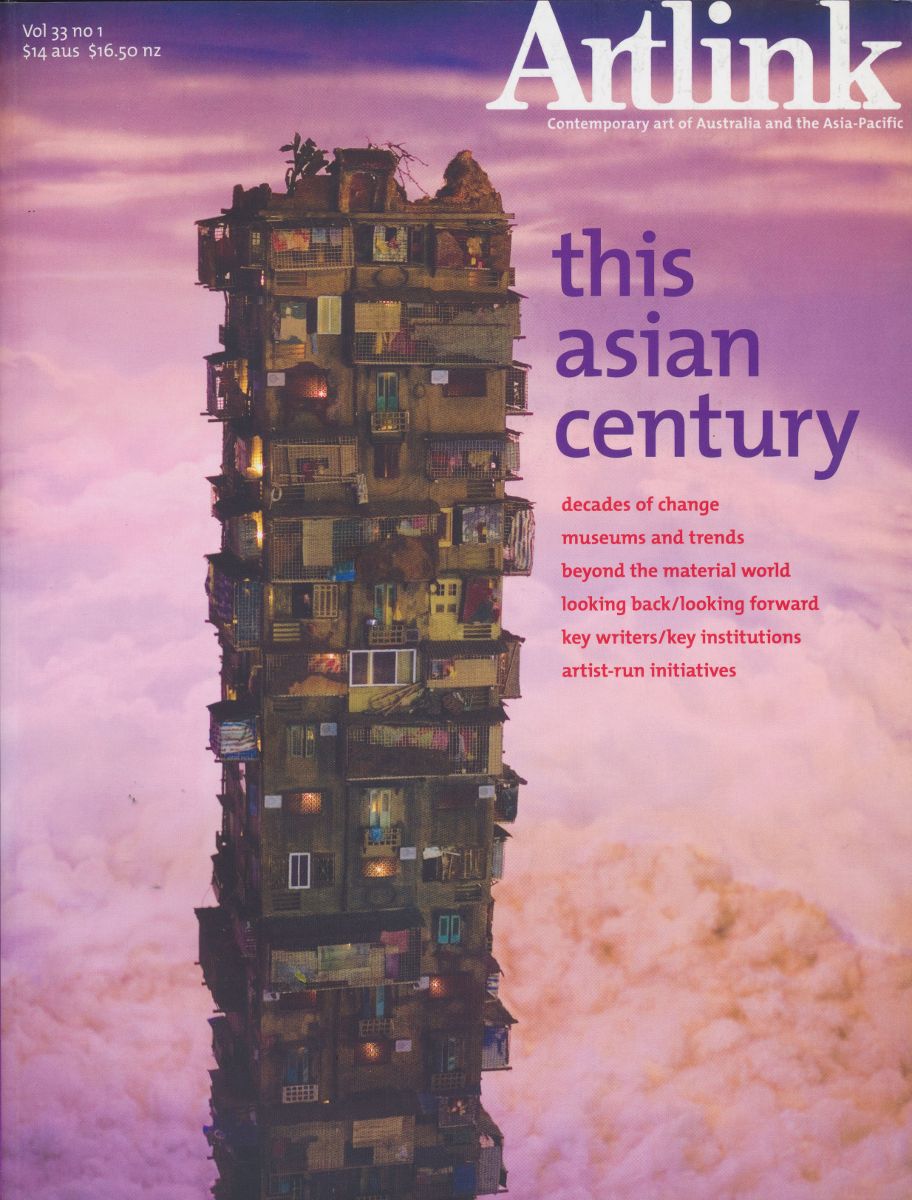
In 2000, a group of Indonesian art collectors established the CP Foundation to revive opportunities for contemporary artists, and chose Pak Jim as the curator. The foundation held the CP Biennale I: Interpellation in 2003 at the National Gallery of Indonesia in Jakarta. This first Biennale was mostly a success. The New York Times dubbed it ‘A Biennale That Puts Indonesia on the Map.’[10] To maintain this momentum, CP Biennale II: Urban/Culture was held in 2005 at Museum Bank Indonesia. Contrastingly, this second iteration was plagued by discord from start to end, which began with Pinkswing Park, a collaborative installation by artists Agus Suwage and Davy Linggar, featuring life-sized photographs of near-nude celebrities, including the popular actor Anjasmara.[11]
I was only nine years old at the time, and, although I was too young to understand fully, I recall seeing this controversy on the news. Reading about these events now, I learned that a hard-line Islamic group mounted aggressive demonstrations, condemning Anjasmara who had appeared in several ‘call to Islam’ religious films. Though unfounded, accusations against the organisers for allegedly disseminating pornographic materials, a police investigation, and internal conflicts lead to the CP Foundation disbanding the biennale.
The controversy of 2005 helped fuel the market and contemporary art began to prosper in Indonesia as the global art market expanded. Artists who were featured in the CP Biennale fiasco became celebrities, contemporary art sales skyrocketed and ‘art world’ activity garnered public attention at a level never before seen in the country. Indonesian curator Rifky Effendy, after art critic Sanento Yuliman, likened this phenomenon to a halimun (mist), observing how a market operating on the logic of global capitalism tends to obscure the quality and philosophical reading of an artwork, enveloping it in a ‘mist’ of branding and monetary value.[12] In 2008, the global economic crisis impacted the Indonesian economy heavily, and by extension its art market, which began to stagnate.
Global art? What next?
In many ways, contemporary art in Indonesia follows a similar trajectory to global contemporary art, through biennials and triennials, controversies and escalating–and crashing–art markets. Throughout the 2010s, as elsewhere, the Indonesian art world continued to evolve. The rapid development of information and communication technologies, increased access to the world wide web and the prevalence of social media, helped bring the art world closer to the people and connect Indonesian art with international audiences. Pak Jim’s prediction had begun to take shape.
Since the turn of the millennia, conversations and collaborations have continued across borders and disciplines. The ongoing APT exhibitions in Brisbane have been a key example, along with the establishment of new institutions within ‘creative cities’ have all played a part in global art’s growth.
The Faculty of Fine Arts and Design at Institut Teknologi Bandung continues to be a key player in the Indonesian art world. Their flagship event Pasar Seni ITB, held irregularly every two-to-six years, is considered to be one of the biggest art bazaars in Southeast Asia. Despite not being a fine art student, I joined the committee for Pasar Seni 2014 in my first year of university. Every iteration of the festival always responds to a particular social issue in Indonesia, and in 2014, this was the issue of individualism brought about by globalisation and the rapid development of technology, under the curatorial theme Antara Aku, Kita, dan Semesta (Between Me, Us, and the Universe). Another Pasar Seni was developed for 2020 but was cancelled because of the Covid-19 pandemic.
In 2015, to accommodate Indonesia’s rapidly growing creative sector, BEKRAF (Badan Ekonomi Kreatif/Creative Economy Agency) was established.[13] The agency categorised the creative economy into sixteen subsectors, one of which is fine arts. While the arts, along with the accompanying creative industries, have now been acknowledged as a significant contributor to Indonesia’s economy, one might still wonder how Effendy’s halimun will manifest in this developing market, and whether the deeper articulation of Indonesian art will be swept aside by the wave of the so-called 'creative economy'.
A first of its kind in Indonesia, Museum MACAN (Museum of Modern and Contemporary Art in Nusantara) opened in Jakarta in 2017. It provides public access to the private art collection of Indonesian collector Haryanto Adikoesoemo, consisting of modern and contemporary artworks made by Indonesian and international artists.[14] This two-way cultural traffic shows how closely Indonesian contemporary art has mingled with global contemporary art on its own soil and abroad. For example, the National Gallery of Australia’s Contemporary Worlds: Indonesia (2019), which featured artists working post-1998 with themes of social disobedience and Dutch colonialism, ideas which I see are well understood in Australia with its own history of British colonisation.
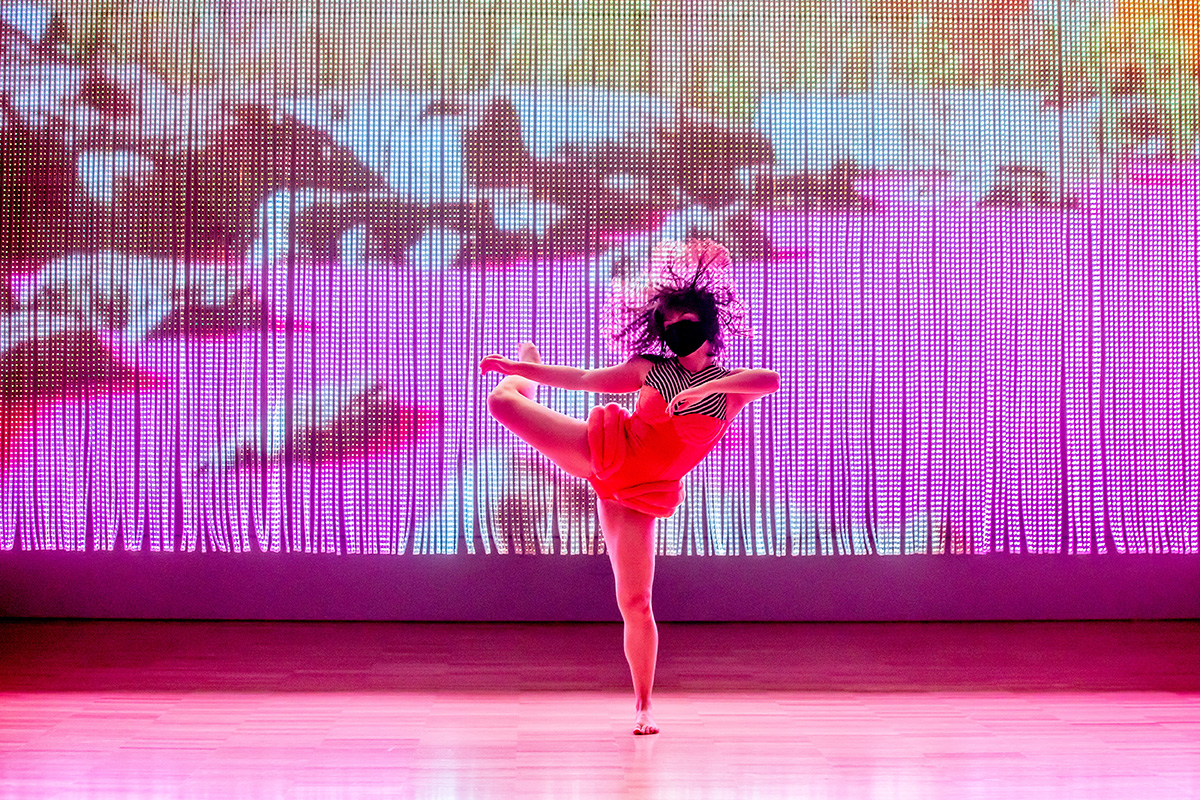
If controversy seemed to decentre Indonesian biennials of the 1990s and early 2000s, events in 2022 when the Indonesian artist’s collective ruangrupa assumed the role of artistic director of Documenta 15 were of different proportions. I watched with the world as a large-scale controversy surrounding anti-Semitic imagery in a banner exhibited by the Indonesian collective Taring Padi unfolded.[15] The events raised many questions about how Indonesian art is perceived in a global setting when different histories and politics are brought together. It also revealed that, as Pak Jim noted a decade ago, while ‘a small group of Indonesian artists were able to penetrate bigger global exhibitions, including biennales …’ ‘efforts to understand global art’— or Indonesian art in a global context—are complex.[16]
In 2021, as a postgraduate student in Melbourne, I interned at Asialink Arts and helped organise Dekat-Dekat Jauh (So Close Yet So Far), a conversation series about Indonesia-Australia relations in visual arts. The series gathered representatives from Australian and Indonesian art institutions, art collectors and artists. One of the speakers was Febie Babyrose, a member of the Bandung-based art collective Tromarama, whose work Solaris was at the NGV Triennial that same month. At that time, I had never seen any Indonesian artists making such kinds of futuristic artwork, although I’ve since learned that pioneering artists such as Krisna Murti have been making new media artworks since as long ago as the 1990s.[17] Today, I regularly encounter new media artworks like Tromarama’s and Krisna Murti’s in my work at ANAT, which sits at the intersections of ‘creativity’ , technology and contemporary art. This intermingling across disciplines is a sign that Indonesian contemporary art is evolving at a pace comparable to the ‘mainstream world art’.
While Indonesian artists are being increasingly engaged on the global stage, and taking up all the advanced digital and computer-generated tools of the most technologically developed nations, have we learned how to articulate and define Indonesian modern and contemporary art, as Pak Jim initiated decades ago? In a country of seventeen thousand islands and seven hundred ethnic groups, Indonesian art will likely never find a singular definition. Does any nation? That said, I think Pak Jim’s assertion that Indonesian art is different from world art stands true. In his closing remarks in the 2013 essay, he speculated that the ‘diversity, [and] multiplicity’ of the 1990s would be central to global art. Today, we would readily add ‘creative economy’ and ‘emerging’ and ‘new generative technologies’, along with ‘collective’ and ‘interdisciplinary’ practices into the mix.
Footnotes
- ^ Jim Supangkat, “The Framing of Indonesian Contemporary Art”, Artlink 13:3&4, (November-March 1993-1994), 47
- ^ Supangkat, 47
- ^ S. Sudjojono, Indonesian Painting Now and in the Future (1946) http://archive.ivaa-online.org/khazanahs/detail/3656
- ^ Supangkat, 1993
- ^ Jim Supangkat, “Growing Pains: Contemporary Art in Indonesia 1990-2010”, Artlink 33:1, (March 2013)
- ^ See Russell Storer and Aaron Seeto, Indonesian art in the world: A curators’ roundtable, Artlink 43:1, 2023
- ^ Jakarta Biennale, https://jakartabiennale.id/2021/history/; Accessed 17 February 2023
- ^ Agung Hujatnikajennong, Observation of the IX Jakarta Fine Art Biennale Debate and its Relationship with the Discussion of Western Postmodernism (1994)
- ^ Supangkat, 1993
- ^ Jane Perlez, “A Biennale That Puts Indonesia On the Map”, The New York Times (17 September 2003) https://www.nytimes.com/2003/09/17/arts/a-biennale-that-puts-indonesia-on-the-map.html; Accessed 17 February 2023
- ^ Hendro Wiyanto, “Tolerating the Intolerant,” Universes in Universe, https://universes.art/en/nafas/articles/2005/cp-biennale-2005
- ^ Rifky Effendy, Halimun = the mist: a reflection upon the development of Indonesian contemporary art (Bandung: Artsociates, 2009)
- ^ UNESCO, Establishment of the Creative Economy Agency (Badan Ekonomi Kreatif - BEKRAF), https://en.unesco.org/creativity/policy-monitoring-platform/establishment-creative-economy; Accessed 17 February 2023
- ^ Museum MACAN, https://www.museummacan.org/about; Accessed 17 February 2023
- ^ Wulan Dirgantoro & Elly Kent, “We need to talk! Art, offence and politics in Documenta 15”, New Mandala (29 June 2022) https://www.newmandala.org/we-need-to-talk-art-offence-and-politics-in-documenta-15/; Accessed 17 February 2023
- ^ Supangkat, 2013, 44-45
- ^ Indonesian Visual Art Archive, http://archive.ivaa-online.org/pelakuseni/krisna-murti; Accessed 17 February 2023




